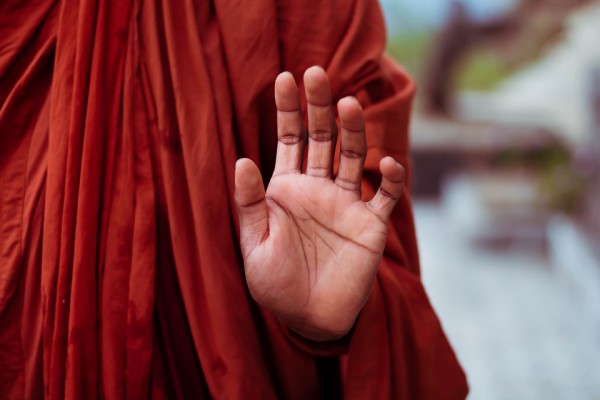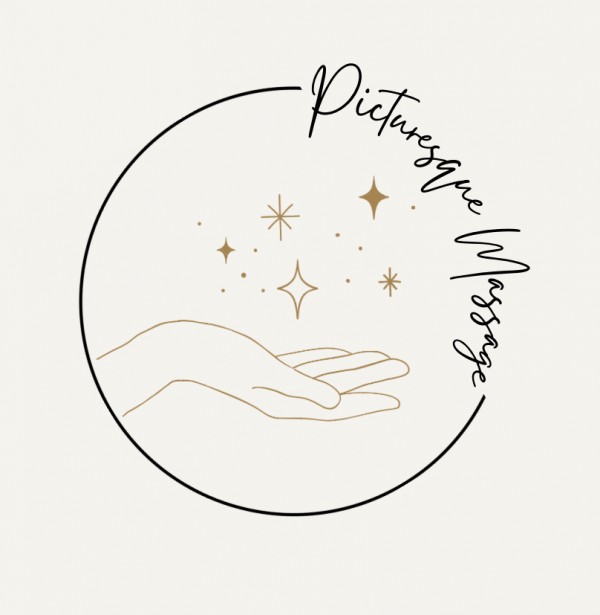A History Of Healing Hands
By Ashley Zimmermann

Image by Bhikku Amitha from Pixabay
There are approximately 5 million touch receptors in our skin. 3,000 in a finger tip. Those of us who have experienced a personal massage can agree there is something very special about the experience. It can feel pure and tender to have someone devote their time and energy specifically to you. You feel cared for, even if you don't directly think about it in the moment. You may feel this way during any type of one-on-one encounter, but the element of touch can add a deeper layer of devotion and care to any experience.
Think about it: why do many of us like hugs? Hugs make us feel loved and cared for. Massage is similar. For many, the touch of another human is a sort of innate, essential desire (in a platonic or familial sense). There is more to massage than merely the mechanical motions and learned techniques. Massage is an art form and an ancient method of healing, and it also serves as a basic form of human connection.
Roots in Eastern Medicine
Traditional massage emerged in India in 3000 BCE as part of the Ayurveda system of healing. Ayurveda is an Eastern, "natural system of medicine" with one of the main doctrines being interconnectedness between the universe, the human body, and life forces. Balance and holistic health are key. Johns Hopkins says, "Ayurveda treatment starts with an internal purification process, followed by a special diet, herbal remedies, massage therapy, yoga, and meditation." Today Ayurveda is more than a lifestyle; it is considered an integrative medical technique. It is considered to be the equivalent of traditional Western medicine, traditional Chinese medicine, and homeopathic medicine.
Massage has been and continues to be an important component of Ayurveda. Florida Academy says in the early days, "massage therapy was a practice passed down through generations to heal injuries, relieve pain, and prevent and cure illnesses." Awareness of massage practices then spread throughout the world to China, Egypt, Japan, and then made its way to Greece and Rome. The importance of healing hands has been known for millennia and has been passed down from culture to culture.
Energy Healing in Other World Traditions
Healing exists in many religious and spiritual traditions around the world. This takes the concept of healing hands beyond the physical and emotional and into the realm of the spiritual. Some of these hands-on healing techniques fall within the category of energy healing.
In the tradition of Christianity, Jesus healed sick persons with his touch. Fr. James McTavish, MD, FMVD, says in his article "Jesus the Divine Physician": "He cured the blind, opened the ears of the deaf, and brought the dead back to life." The tradition of "laying on of hands" is still practiced in various Christian denominations as a means of communing with the Holy Spirit or taking part in faith healing.
Reiki is a popular contemporary healing option that is based upon the notion of energy flow within the body, similar to the Ayurvedic tradition and traditional Chinese medicine. The philosophy is that we all have universal energy which flows through our bodies, and sometimes it gets blocked and needs to be freed. Encyclopedia.com says, "Reiki practitioners are trained to detect and alleviate problems of energy flow on the physical, emotional, and spiritual level." A practitioner will lay their hands on a recipient's body and will keep them stationary, usually for 5 minutes in each position. There are approximately 20 positions that a practitioner may use.
Shamanism is still practiced today but has roots in prehistoric Siberia. Brittanica.com says the term shamanism comes from the Manchu-Tungus word šaman which translates to "one who knows." Contemporary shamanism focuses mainly on energy healing. In a YouTube interview, Karen Hutchins says the world is energy and everything is connected. A Shamanic healing session is more about "clearing the air" and restoring energy imbalances than touching a recipient; however, the power of the healing comes from within the practitioner.
One more energy healing tradition is Qigong. The Earl E. Bakken Center for Spirituality & Healing at the University of Minnesota explains that this practice is about studying the Qi in order to learn how to manipulate it "to promote self-healing, prevent disease, and increase longevity." Medical Qigong includes massage practices which a Qigong healer uses to emit healing Qi.
The Power of Touch
The above mentioned world healing traditions illustrate how powerful healing hands have been for thousands of years. Nick Polizzi says in his article, "Healing With Your Hands - A Forgotten Art":
"Whether it's muscular, skeletal, energetic, or otherwise, knowing when someone is in need of touch is an extremely valuable skill. And we all are capable of learning it. Better yet, remembering it."
Let's briefly go back to the basics. Johns Hopkins says in an article titled, "What is Massage?": "Rubbing areas that hurt is a natural human response." Massage feels good, and it often fulfills the need to relieve pain. (Hopkins says interestingly, other mammals do this, too.) You can even give yourself a massage for nearly instant relief for mild pain, and many of us do this intuitively.
Similarly, many people enjoy receiving a simple massage from a friend or loved one, even if they are not a professional (with permission, of course). Touch emotes care. A significant amount of trust is often required in order for someone to feel comfortable receiving this type of massage; this kind of trust is built through a relationship. Relationships take time and intention to build.
The job of a massage therapist requires much more skill because they must establish trust with a client in a short period of time. Most of us are apprehensive and uncomfortable with physical touch from a stranger. Therefore, it requires technical skill, empathy, and situational awareness for a massage therapist to determine the appropriate amount and type of touch to use to bring about healing. The therapist must first navigate these waters and they can then begin to work their magic.
We have learned in this article how massage therapy is descended from a long and rich history of healing in many global traditions. Over millennia, healing hands have offered relief from physical and emotional pain; they have ushered many into realms of spiritual healing; and they have continued to remind us of the value of human physical connection.
References:
https://florida-academy.edu/history-of-massage-therapy/ - The History of Massage Therapy: 5,000 Years of Relaxation and Pain Relief
https://www.hopkinsmedicine.org/health/wellness-and-prevention/ayurveda - What is Ayurveda?
https://www.thesacredscience.com/healing-with-our-hands-a-forgotten-art/ - Healing With Your Hands – A Forgotten Art
https://www.hopkinsmedicine.org/health/wellness-and-prevention/massage - What is massage?
https://www.shape.com/lifestyle/mind-and-body/how-to-self-massage-at-home - Your Step-by-Step Guide to Giving Yourself a Massage at Home
https://www.encyclopedia.com/medicine/divisions-diagnostics-and-procedures/medicine/reiki - Reiki
https://www.ncbi.nlm.nih.gov/pmc/articles/PMC6027108/ - Jesus the Divine Physician
https://www.britannica.com/topic/faith-healing - Faith healing
https://www.britannica.com/topic/shamanism/Worldview - shamanism
https://www.gaia.com/article/how-much-do-you-know-about-shamanism - The Origins of Shamanism
Shamanic Healing
https://www.takingcharge.csh.umn.edu/shamanism - Shamanism
https://www.csh.umn.edu/
https://www.takingcharge.csh.umn.edu/qigong - Qigong
<<-- Back to Blogs Email to a friend



 Picturesque Massage
Picturesque Massage